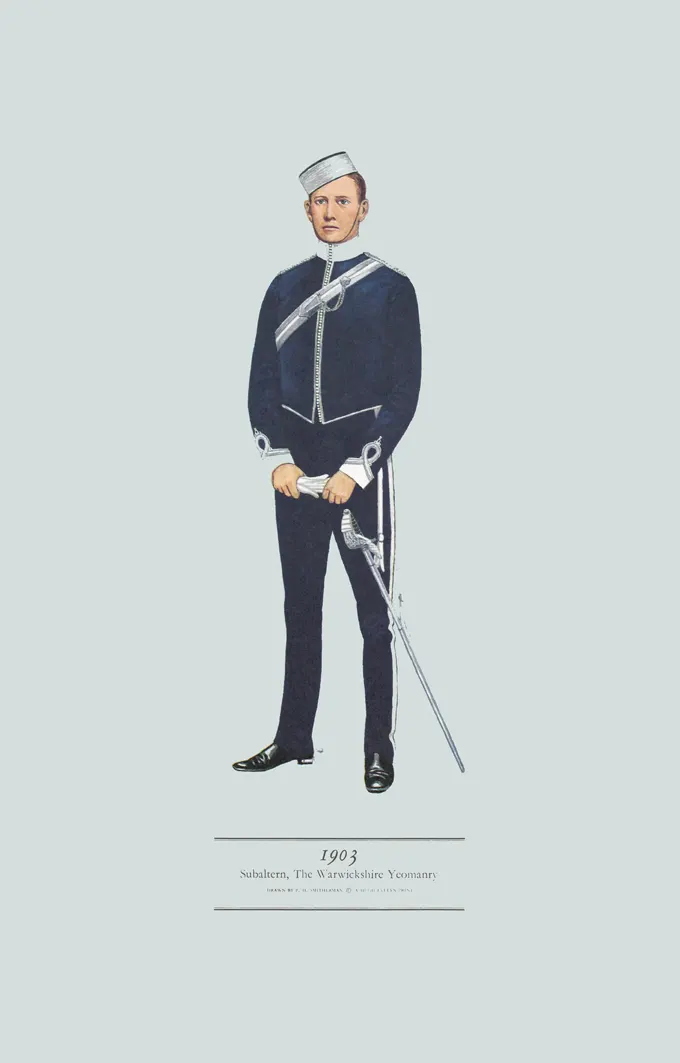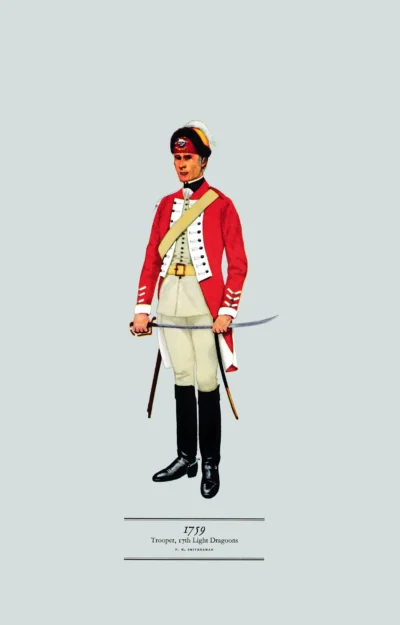Subaltern, The Warwickshire Yeomanry, 1903
£20.00
Raised 1794; Warwickshire Regiment of Yeomanry Cavalry (1796); (scroll down for a more detailed Description)
Published 1967 by © Hugh Evelyn Limited; drawn by Colonel Philip Henry Smitherman (1910-1982), Royal Corps of Signals
Size: c. 24.5 x 37.5cm [9 ½ ″ x 14 ½ ″] (may vary slightly from printers’ cut 50 years ago)
Printed on on medium cardstock weighing 144 g/sm2 faced in light greyish blue (RGB c. d5dede)
Print is STANDARD size – shipping is the same for 1 to 10 prints (based on largest print size in your order) – see Shipping & Returns
In stock
Description
The regiment was raised as the Gentlemen and Yeomanry of Warwickshire in 1794. Initially comprising four troops that were regimented in 1796 as the Warwickshire Regiment of Yeomanry Cavalry, it expanded to a fifth troop in 1813, a sixth in 1831, and in 1854, with the Crimean War causing an upsurge in martial sentiment, two more troops. In 1956 it amalgamated with The Queen’s Own Worcestershire Hussars, forming the Queen’s Own Warwickshire and Worcestershire Yeomanry. In July 1999 A (Queen’s Own Warwickshire and Worcestershire Yeomanry) Squadron amalgamated with B (Staffordshire Yeomanry) Squadron of the same regiment, to form A (Staffordshire, Warwickshire and Worcestershire) Squadron, The Royal Mercian and Lancastrian Yeomanry at Dudley. In October 2006, that became a single cap badge regiment, when the individual cap badges of each squadron were replaced by the newly designed RMLY cap badge. In July 2013, it was announced that the Royal Mercian and Lancastrian Yeomanry would be restructured under the Army 2020 plan. The squadron, as B (Staffordshire, Warwickshire and Worcestershire Yeomanry), resubordinated to The Royal Yeomanry. The subaltern is dressed as he would for orderly duties. The stable jacket would be worn open in the mess with a white waistcoat underneath, and closed, as shown, with shoulder belt and sword, by the duty officer. As a subaltern the loop on his cuff is a very simple affair: field officers had the central loop embellished with a considerable amount of lace.
Source: Regimental photographs.
Additional information
| Weight | 0.012 kg |
|---|---|
| Dimensions | 24 × 37 cm |





